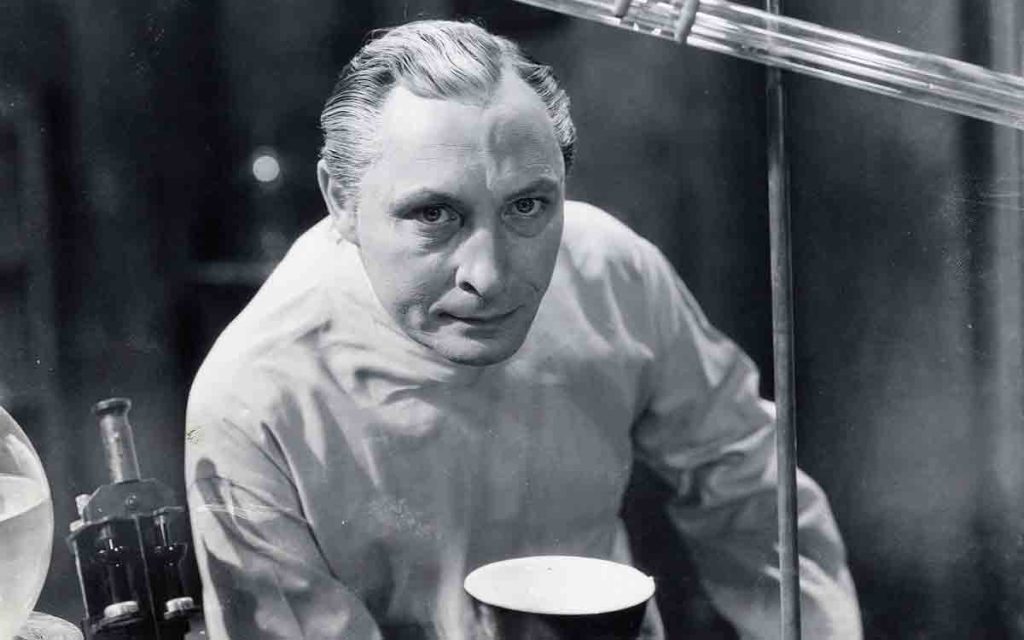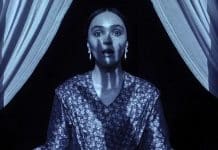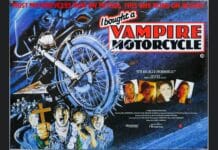The Vampire Bat 1933, starring Lionel Atwill at his most menacing, is a creepy classic that feels like it slipped straight from Universal’s vaults, writes DAVID SAUNDERSON

TITLE: The Vampire Bat
RELEASED: 1933
CAST: Lionel Atwill, Fay Wray, Dwight Frye, Melvyn Douglas
DIRECTOR: Frank R. Strayer
Review of The Vampire Bat 1933
Set in a small German village plagued by a series of murders that bear the tell-tale signs of a vampire, The Vampire Bat 1933 starts with a sense of gothic dread and quickly establishes itself as a eerie whodunit.
The villagers are convinced a bloodsucker is on the loose, and the local copper (played by Melvyn Douglas) is left with the unenviable task of sorting fact from superstition.
Enter Dr Otto von Niemann (Lionel Atwill), a scientist who seems all too fascinated by the mystery at hand. Meanwhile, the villagers eye local halfwit Herman Gleib (Dwight Frye) with suspicion, for his fondness for bats and his peculiar behaviour.
Although Fay Wray, who plays Ruth Bertin, is best known for her scream queen role in King Kong 1933, she is every bit the horror heroine here. At this point in her career, she was still on the cusp of becoming a genre icon.
Lionel Atwill, fresh off Doctor X and The Mystery of the Wax Museum, brings his trademark sinister charm to the screen, which immediately makes him the prime suspect in any film.
And Dwight Frye, forever memorable as Renfield in Dracula 1931, reprises his role of the deranged, slightly pathetic, yet oddly sympathetic madman—only this time he is more of a tragic figure than a villain.
The film benefits greatly from borrowing sets and locations from Universal Studios, who leased out their famous backlots. We see familiar sights from Frankenstein’s German village and The Old Dark House, lending the film an eerie authenticity that is often missing in other Poverty Row productions.
The atmosphere is thick with fog and shadows, and the cobblestone streets and looming architecture create a claustrophobic sense of dread. From the very first scene, the movie sets up a classic gothic tone, complete with howling winds and flickering candles.
But don’t be fooled—this is less of a creature feature and more of a murder mystery dressed in gothic garb.
As the plot unfolds, the question becomes not so much about whether there is a vampire but who is using the vampire legend to cover up more earthly misdeeds. As with many horror films of the time, the real monster is all too human.
While The Vampire Bat doesn’t have the budget or the polish of Universal’s big hits, it does a remarkable job of mimicking their style.
Majestic Pictures, the small studio behind it, cleverly made use of Universal’s surplus sets and hired top-notch talent, making this film a true chameleon of the era. If you weren’t told otherwise, you might just assume it was part of Universal’s horror stable.
Despite its modest origins, The Vampire Bat has several chilling moments and an effective score that adds to its tension.
The revelation of Atwill’s character as the villain comes as no great surprise — he wears his menace like a second skin — but his performance is, as always, a delight to watch.
The film eventually reveals itself to be more of a straightforward thriller than a supernatural horror, which may disappoint those looking for a more traditional vampire tale.
The Vampire Bat might not be the most original film of its time, but it’s certainly one of the most enjoyable forgotten horror films from the early ’30s.
With a runtime of just over an hour, it only slightly overstays its welcome.
It’s a must-see for fans of classic horror, a delightful piece of cinematic history that proves even the most modest of productions can deliver chills.
Tell us your thoughts about The Vampire Bat 1933 in the comments section below!







